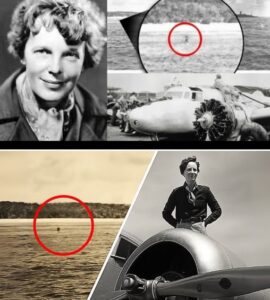Nearly nine decades after her disappearance, Amelia Earhart’s story continues to haunt and inspire the world.
She was more than a pilot — she was a symbol of courage, curiosity, and determination in an era when aviation was still young and women were rarely seen at the controls of airplanes.
Now, in an astonishing development, new evidence suggests that the legendary aviator and her navigator, Fred Noonan, may not have met their fate in the vast Pacific Ocean as long believed.

Instead, clues scattered across time — bones, artifacts, radio signals, and even satellite imagery — may finally be converging to tell a different story.
Could Amelia Earhart have survived the crash that ended her final flight? And if so, why has it taken nearly 88 years for the truth to emerge?
The Flight That Changed History
On the morning of July 2, 1937, Amelia Earhart and her trusted navigator Fred Noonan took off from Lae, Papua New Guinea, on what was supposed to be one of the final legs of their ambitious attempt to fly around the world. Their destination that day was Howland Island, a small patch of land in the central Pacific barely large enough for a runway.
Earhart’s aircraft, the Lockheed Electra 10E, was among the most advanced planes of its time, equipped with dual engines and state-of-the-art navigation tools. Yet the journey was perilous. The vast Pacific was largely uncharted, weather unpredictable, and communication with ships and stations often unreliable.
As Earhart’s flight neared its destination, radio transmissions between her and the U.S. Coast Guard vessel Itasca grew increasingly desperate. Her final words, chilling in their simplicity, were recorded as:
“We are running north and south. We must be on you but cannot see you. Fuel is running low.”
Moments later — silence.
The world waited for a message that never came.





